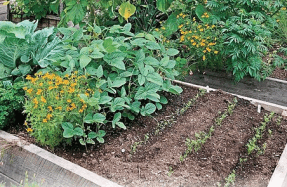TIMBER TIPS
■ varies in each species. Some species, such as cedar, oak and cypress, have natural decayresistant properties, whereas others require treatment to boost their resistance. Most wood species used■ is higher in some species, such as cedar, which contains resins that make it less palatable to insects, but no wood is insect-proof. Preventive measures, including stains and coatings with insect-deterring additives, should be taken no matter what species you choose.■ is based on the wood’s insulation properties and its thermal mass. Insulation refers to the wood’s ability to resist heat transfer. The insulating value of such materials is expressed as its “R-value,” which signifies the amount of heat loss through the material.In truth, the R-value of an individual log isn’t high compared to materials like foam insulation or structural insulated panels (SIPs), but testing has shown that log homes often are more energy efficient than conventional homes boasting higher R-values. How can this be? It’s because of thermal mass. The sun warms the logs during the day and releases that stored heat at night. During the summer, the logs’ mass slows the transfer of heat into the home, keeping the it cooler. Thicker logs absorb and radiate more heat than slimmer ones, so building with large logs in extremeweather prone areas makes sense.■ Wood changes color over time, so it’s a good idea to look at new homes as well as several that are a little older. Before you commit to a log species, experiment with how the wood accepts stain so that you know what to expect when your home is complete.
You’re reading a preview, subscribe to read more.
Start your free 30 days



